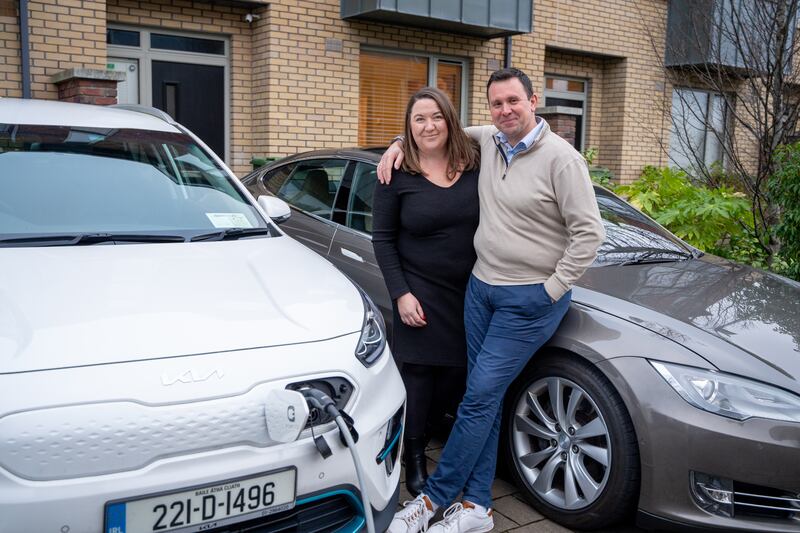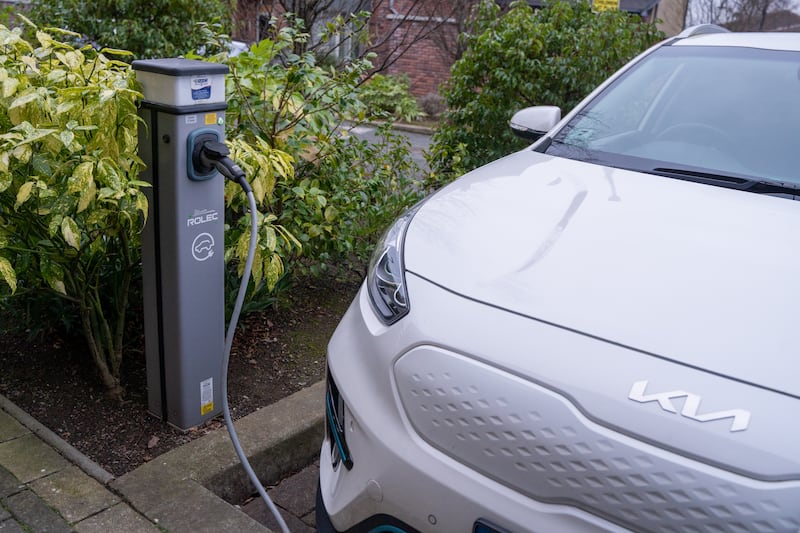People go electric for many reasons but a simple money-saving endeavour transpired to be a lifestyle change for South Dublin-based couple Lisa and John Carey.
Lisa, a secondary school teacher, and John, who works in IT, are fully-fledged converts to electric vehicles (EVs) - two of them are now proudly parked in their Sandyford driveway. While the environmental benefits of going electric are a benefit, this wasn’t the primary motivation behind their switch to EVs.
Although they both enjoy relatively short commutes to work right now, the initial reason they chose to go electric was to save money on fuel. Back in 2016, Lisa was commuting to her previous school in Wicklow town from their old house in Rathfarnham. The two-hour return trip - or more depending on traffic - was costing her in the region of €80 each week on petrol.
“It was costing us a significant amount of money and it just couldn’t continue,” says John. The couple, who have three kids aged 10, 11 and 14, took the decision to purchase a new Nissan Leaf. He points out that this made economic sense, given that the monthly loan repayments on the fully financed new car were less than what they had been spending on fuel. The savings racked up - motor tax for electric cars costs just €120 per annum, and maintenance costs are minimal, they say.

All the concerns they had at the beginning were quickly assuaged. “After driving an electric car for six months, we realised we were never going back to having a petrol car again,” John says. In the same year, he also changed his car, purchasing a second-hand Nissan Leaf. “I found it much more relaxing to drive.”
His wife agrees. “They are all automatic, which is just so much easier, and there are no mechanics to it, as there is just a battery and no engine so there is little to no maintenance. You don’t have to put oil or water in it and I am not worried about the timing belt going or anything like that. It’s the ideal car for everyone!”
Having been relatively early adopters, they have stayed loyal to EVs: Right now Lisa drives a fully electric Kia Niro, and in 2019 John purchased a second-hand Tesla model S. They have a charging point at home, also purchased with the help of grants; a full charge costs approximately €6 and they typically charge their cars twice a week. And it is far from just a runaround; Lisa says she uses it to go to work, ferry kids to and from extracurricular activities and sports, and she also drives to Sandycove to go swimming about three or four times a week. “There is a lot of coming and going. It’s used like any busy family’s car. We also regularly take trips to Westmeath to see John’s brother or head to Wexford for the weekend.”

She is effusive about the advantages of their cars. “It is so reliable in terms of the battery I am not worried about breaking down or getting stuck somewhere and any range anxiety is eroded with careful planning. I also find I am a better and safer driver versus when I was driving a traditional petrol or diesel car.”
And range anxiety is clearly not a concern for the couple, who drove both cars across France last summer.
“We got the ferry to France and drove as far as Vendée in France,” Lisa explains. “I knew I would need two charges between the boat and Vendée, but it was easy to plan and there are chargers everywhere on the continent. It seemed like every third car in France was an EV. The charging network there is just incredible.”
“Irish ferries have charging points on their ferries so you just have to book one and you can charge your car while you are on the boat, which makes it even easier,” adds John.
They have witnessed what they say are “massive” improvements in Ireland’s charging infrastructure, which gives them even more confidence. It is expected that there will be between 3,200 and 6,200 charge points nationally by 2025 – the difference in the number will depend both on demand and the type of charger installed. For 2030 this number is expected to increase by 300%.
There are also several apps now available that help you choose the best route based on the charging network.

And while they admit route planning was a “bit of a learning curve”, they now find it second nature. “On the way home, as soon as I came off the boat in Rosslare I turned left and drove to Ballydehob in West Cork with the kids,” says Lisa. “Obviously we needed to charge it on the way, but on a long drive you would be stopping anyway, whether it’s a toilet break or a coffee break. It’s just as simple as incorporating lunch on those trips and planning your route.”
Lisa says their overwhelmingly positive experience with EVs has inspired friends and family to make the switch. “Two of our neighbours have gone electric purely based on our recommendation. Once you make the leap you never go back - I will never drive a petrol or diesel car again.”
Zero Emissions Vehicles Ireland (ZEVI) has been established to support consumers, the public sector and businesses to continue to make the switch to zero emissions vehicles.
Visit gov.ie/zevi to learn more about electric vehicles and the grants available.














